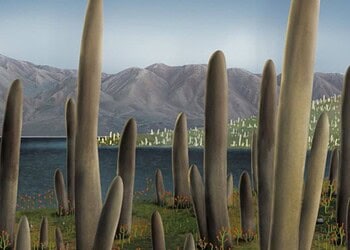Will we ever find a cost-effective, environmentally friendly way to filter our wastewater? One new study says: willows.

Filtering wastewater through the roots of willow trees could help scrub over 30 million liters per hectare of trees, which is quite a decent amount. While these trees won’t overtake our current water treatment sites just yet, they do show great potential for the job. Willow trees are not just very effective at extracting compounds like nitrogen out of wastewater, the team explains, but they can also tolerate high volumes of it (which is a bit of a prerequisite for a filtration system).
Additionally, the trees can eventually be harvested for their biomass, and used, for example, to make biofuels.
Help from trees
“We’re still learning how these trees can tolerate and treat such high volumes of wastewater, but willows’ complex ‘phyto’-chemical toolkit is giving us exciting clues,” said Eszter Sas, lead author of the study and a PhD student at Université de Montréal.
All in all, roughly six trillion liters of municipal wastewater are partially treated and discharged into the Canadian environment every year. A further 150 billion litres are dumped into the country’s surface waters completely untreated.
Looking for an environmentally friendly solution to the latter bit, the authors estimated how efficient willows, a water-loving tree species, could be at partially-filtering wastewater. They collaborated with a plantation in Quebec to gauge just how much water each tree can process.
They first expected to see the plants react poorly to the wastewater, and as such, see them process lower quantities of water and reduce their rate of growth (their ‘yield’). Willows today are used as a source of raw materials for biofuels and certain chemicals, including some used for pharmaceutical products.
But they report being quite surprised by what they found: a hectare of willow trees could treat around 30 million liters of primary wastewater per year, with yields actually increasing after the trees were exposed to wastewater. The nitrogen it contains is likely a key player in this increase, as nitrogen is not readily available to plants in the wild and forms a natural bottleneck in their growth rate. All in all, the willow trees tripled their biomass production during the study, the team notes. This is a prime source of raw material for renewable lignocellulosic biofuels, also known as second-generation biofuels, which do not compete for raw materials with our food supply networks.
The team also analyzed the biomass to establish what valuable chemicals can be extracted. In addition to salicylic acid (the active component in aspirin), which was present in high quantities, they report that several chemicals with antioxidant, anticancer, anti-inflammatory, and anti-microbial properties were present in high levels. Some of these were induced (not naturally found in willows), while some were naturally occurring, but present at higher levels than expected.
“While most of the induced chemical compounds have not been seen before in willows, some have been observed in salt-tolerant plants such as licorice and mangroves and are known to be potent antioxidants,” said Sas. “Intriguingly, a number of the induced chemicals are entirely uncharacterized and a mystery. It’s amazing how much novel plant chemistry there is still to be discovered, even in willow trees, which have been around for thousands of years.
“It seems likely that we’re still only scratching the surface of these trees’ natural chemical complexity, which could be harnessed to tackle environmental problems.”
Using natural solutions to wastewater treatment, such as filtration by willow trees, would help both reduce operating costs as well as provide a source of bioproducts, as identified by the team in their analysis. In essence, it’s a self-contained, self-operating recycling system that takes in waste and outputs fuel or medicine. Best of all, they should have a low environmental footprint, perhaps even help scrub CO2 out of the atmosphere overall.
“This concept of a biorefinery seems to be fantastic in allowing new environmental technologies to compete economically with the highly established markets of petroleum-based fossil fuels and chemicals while also helping to reduce ongoing human damage to the ecosystem.”
The paper “Biorefinery potential of sustainable municipal wastewater treatment using fast-growing willow” has been published in the journal Science of The Total Environment.






